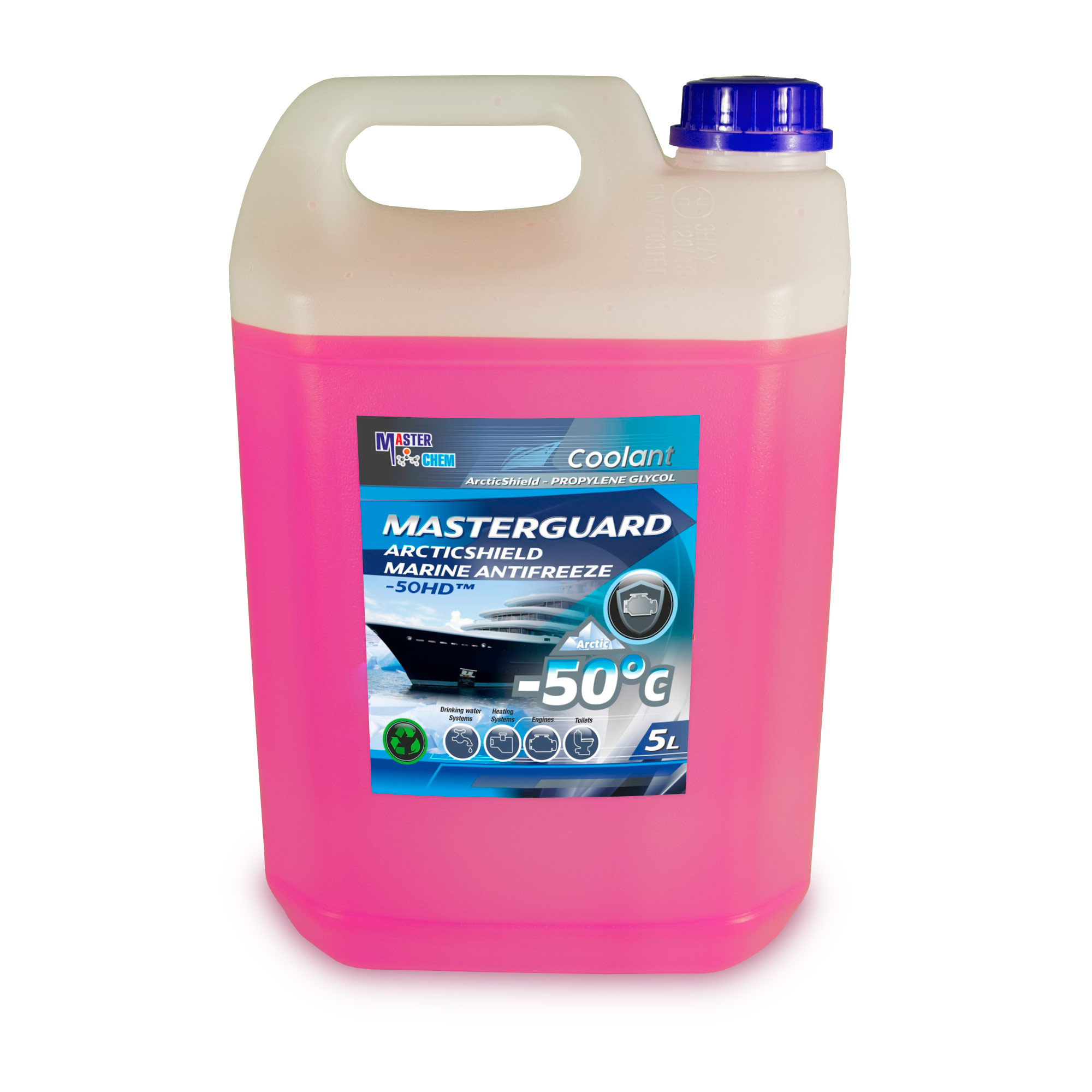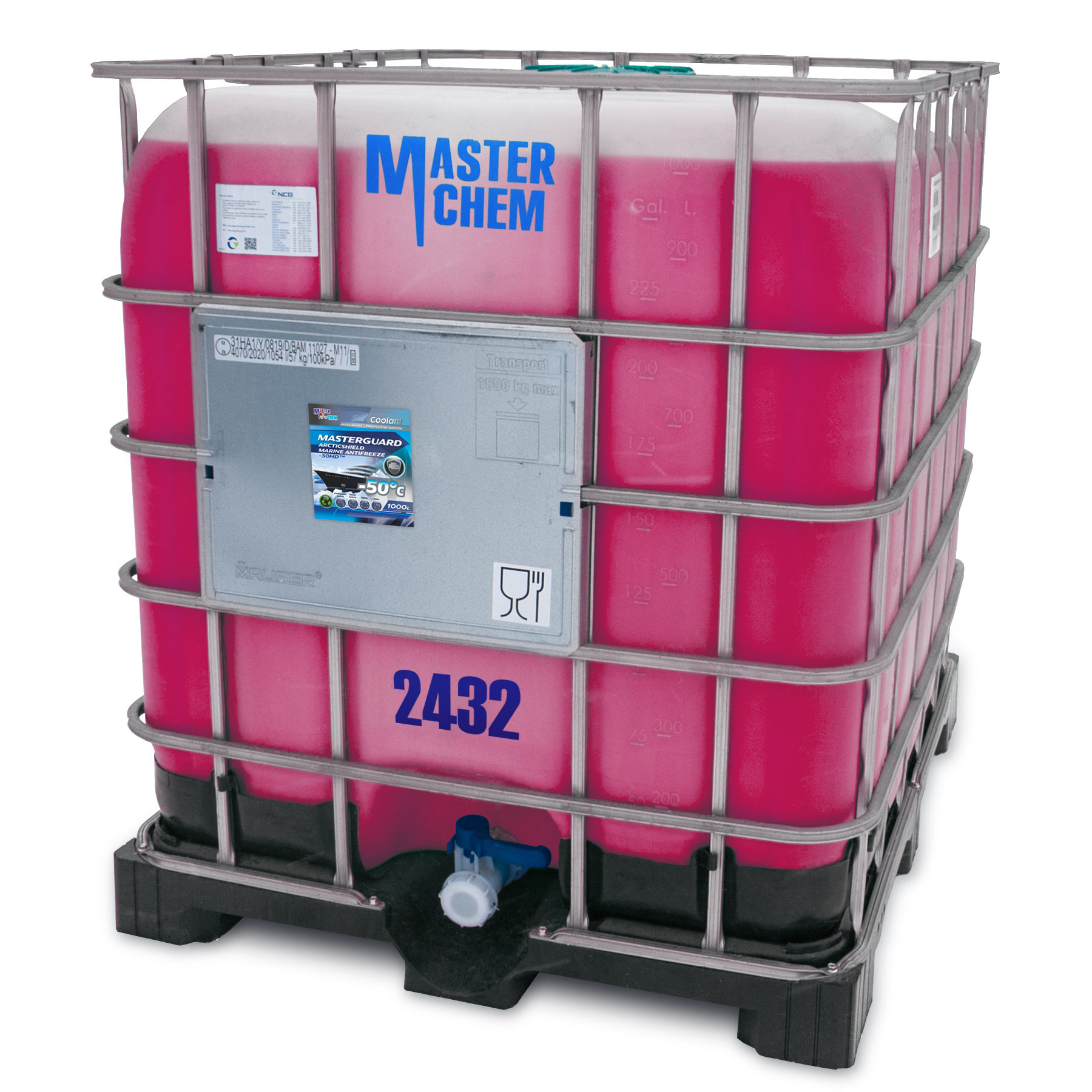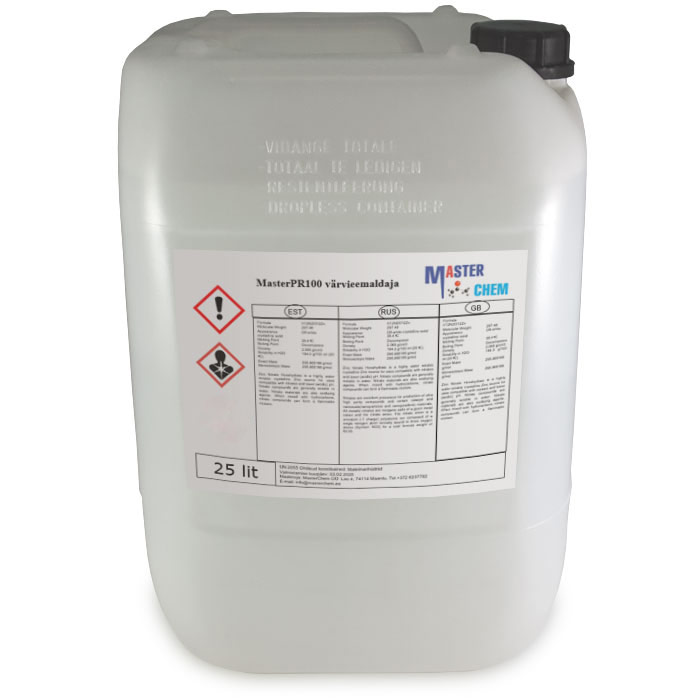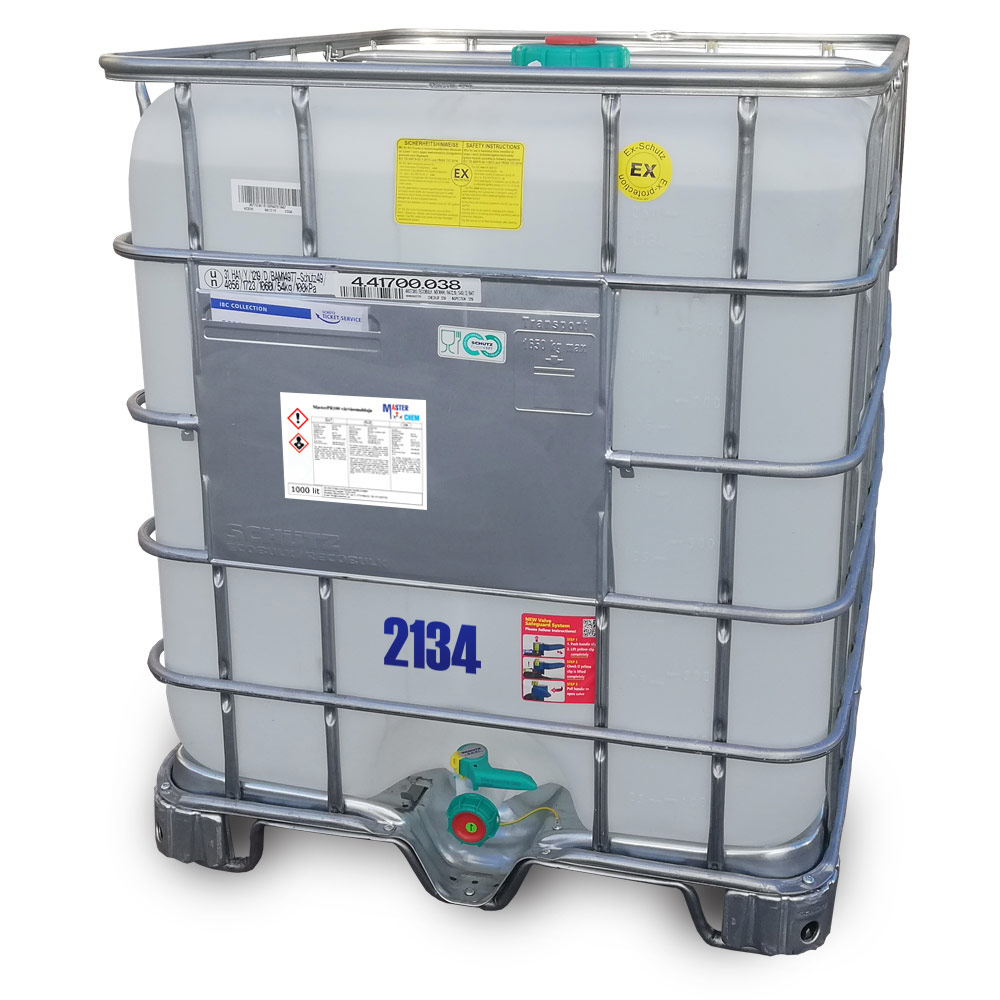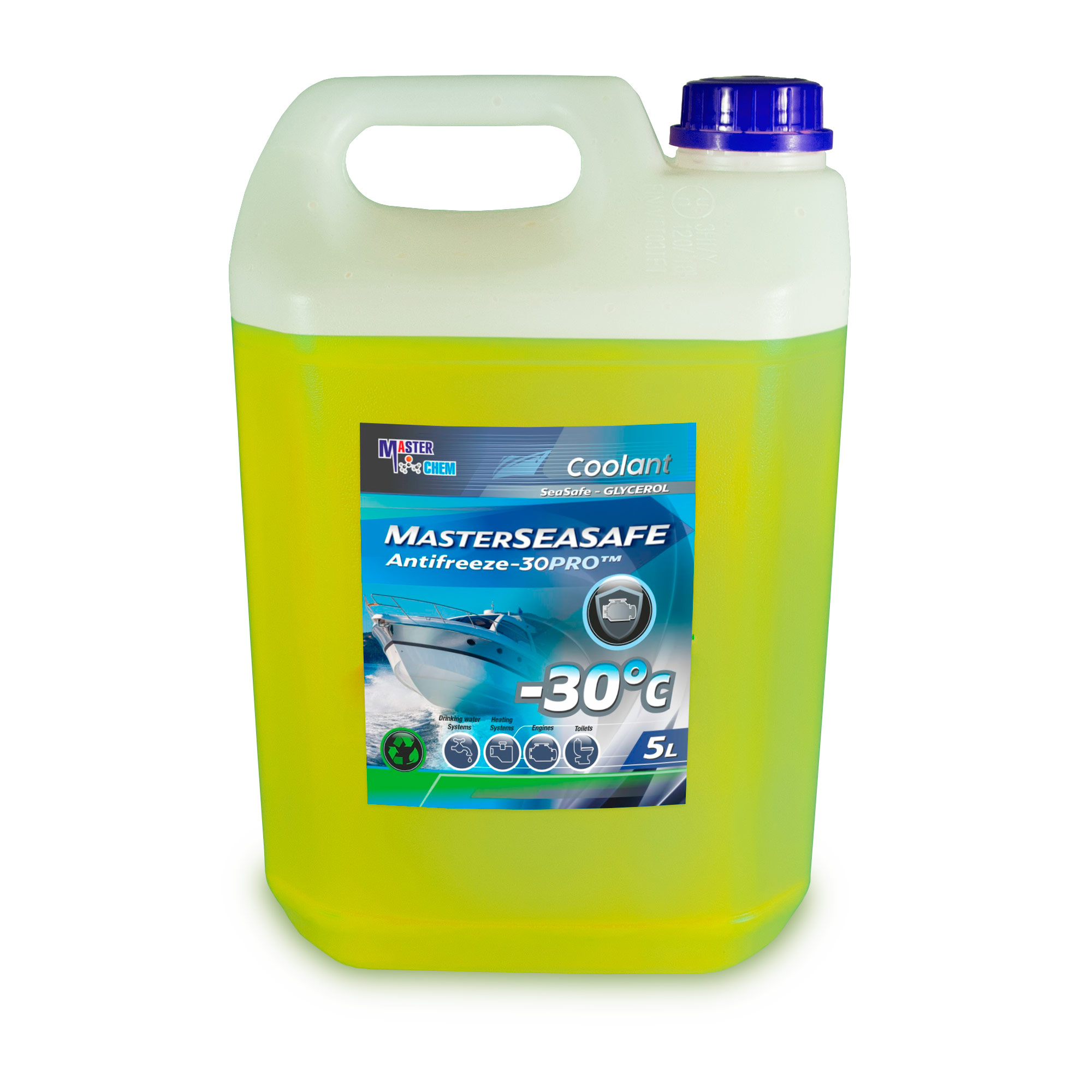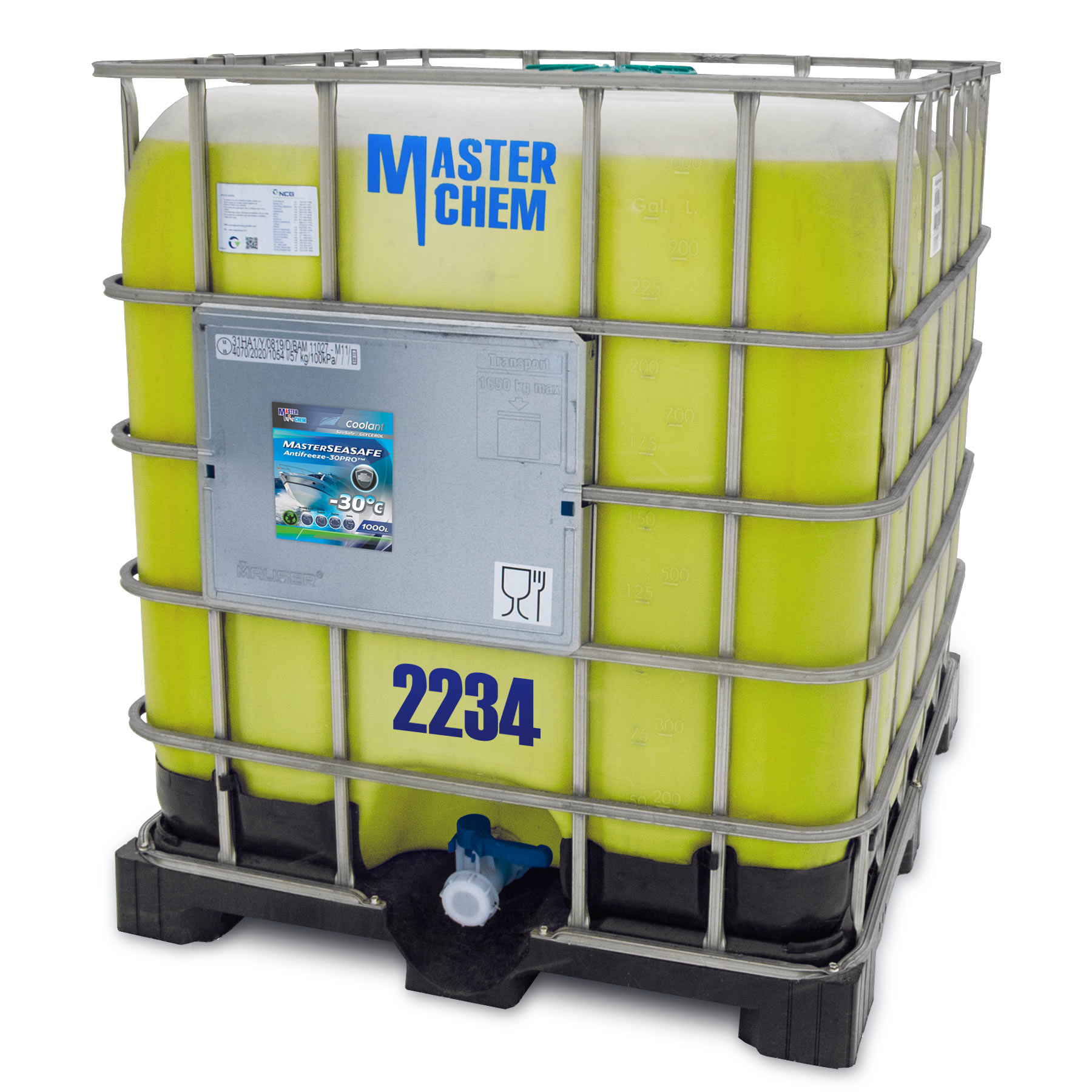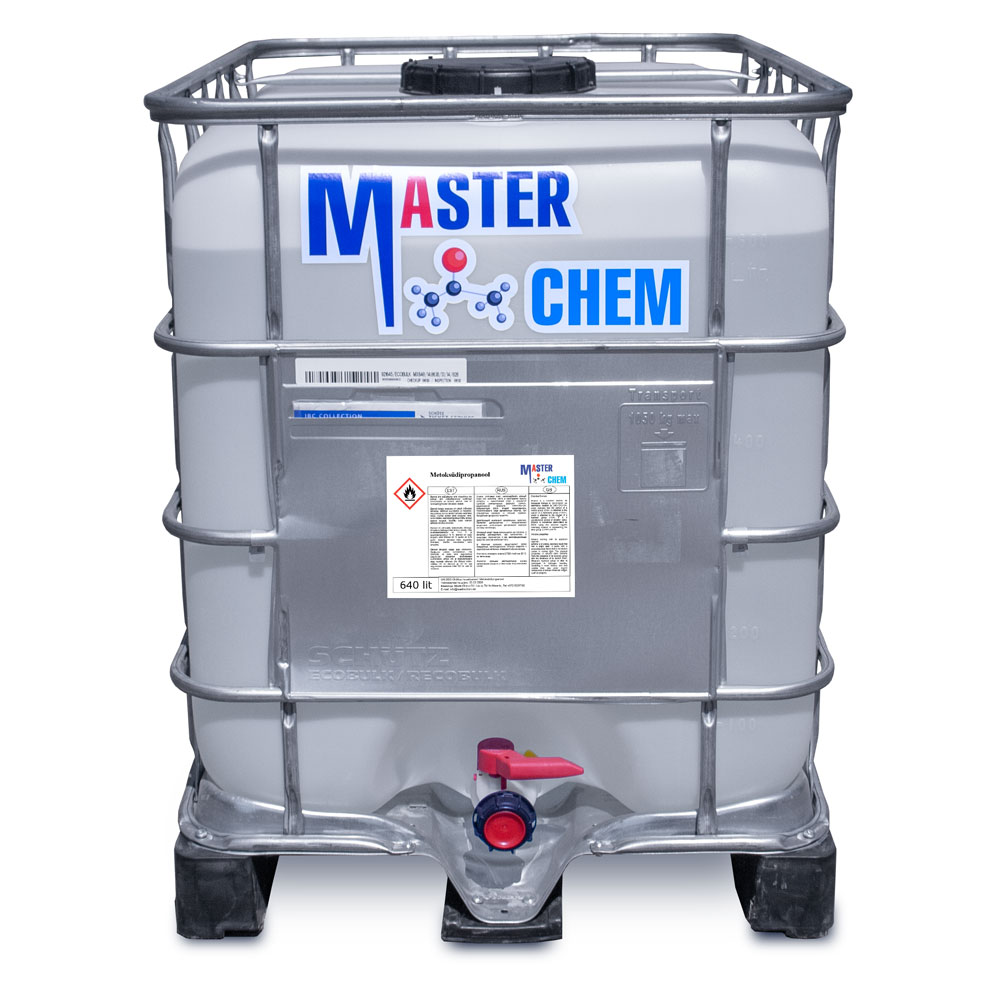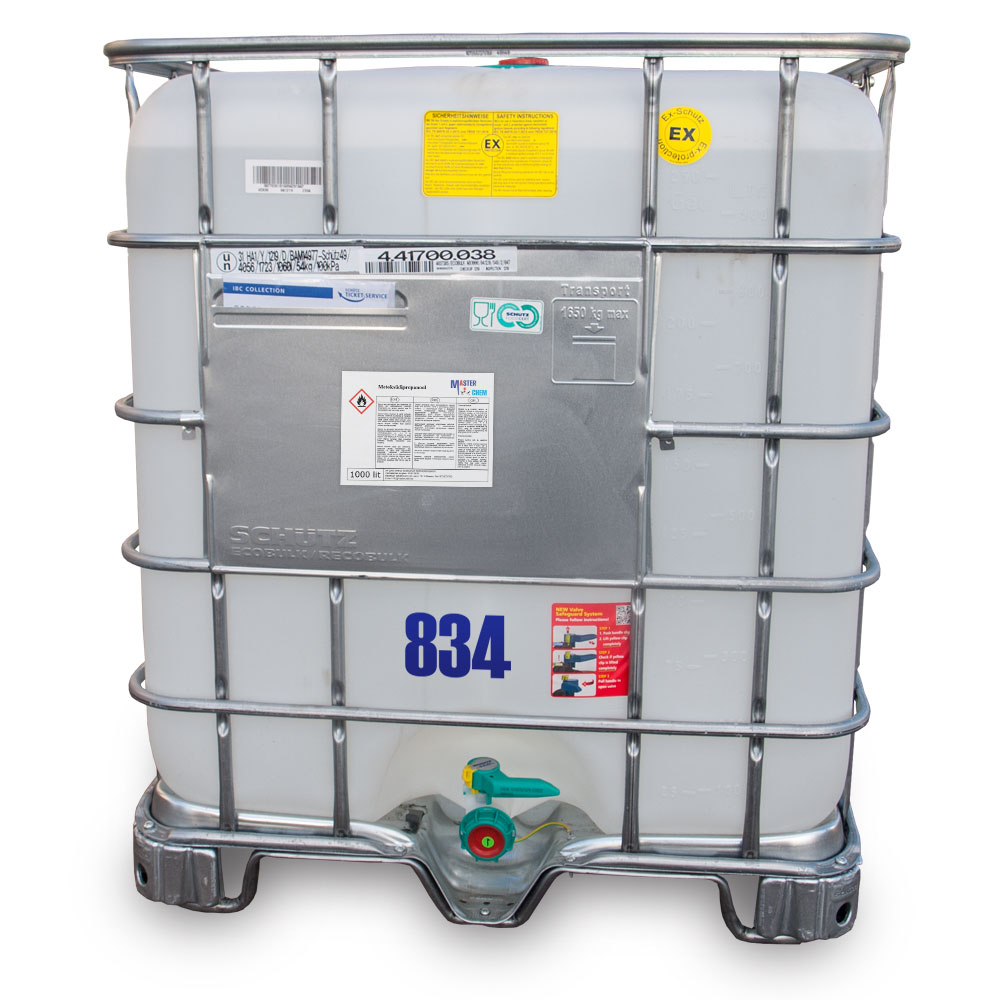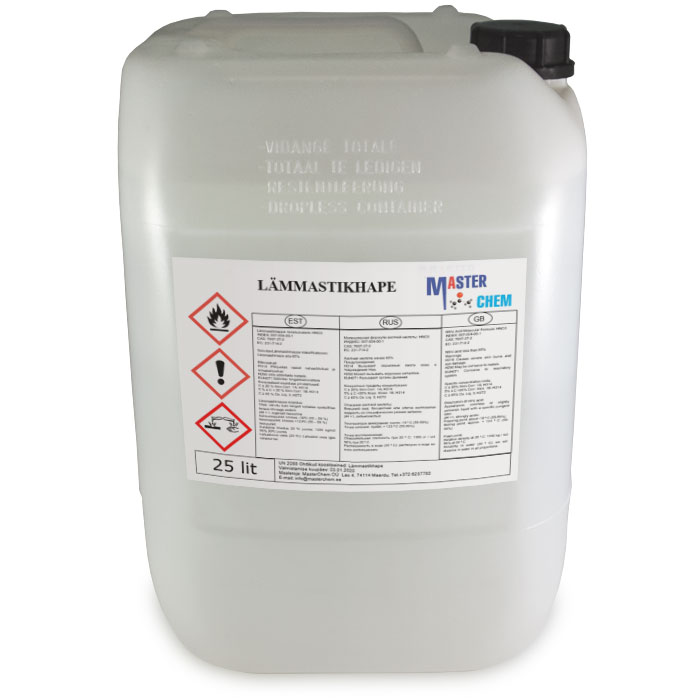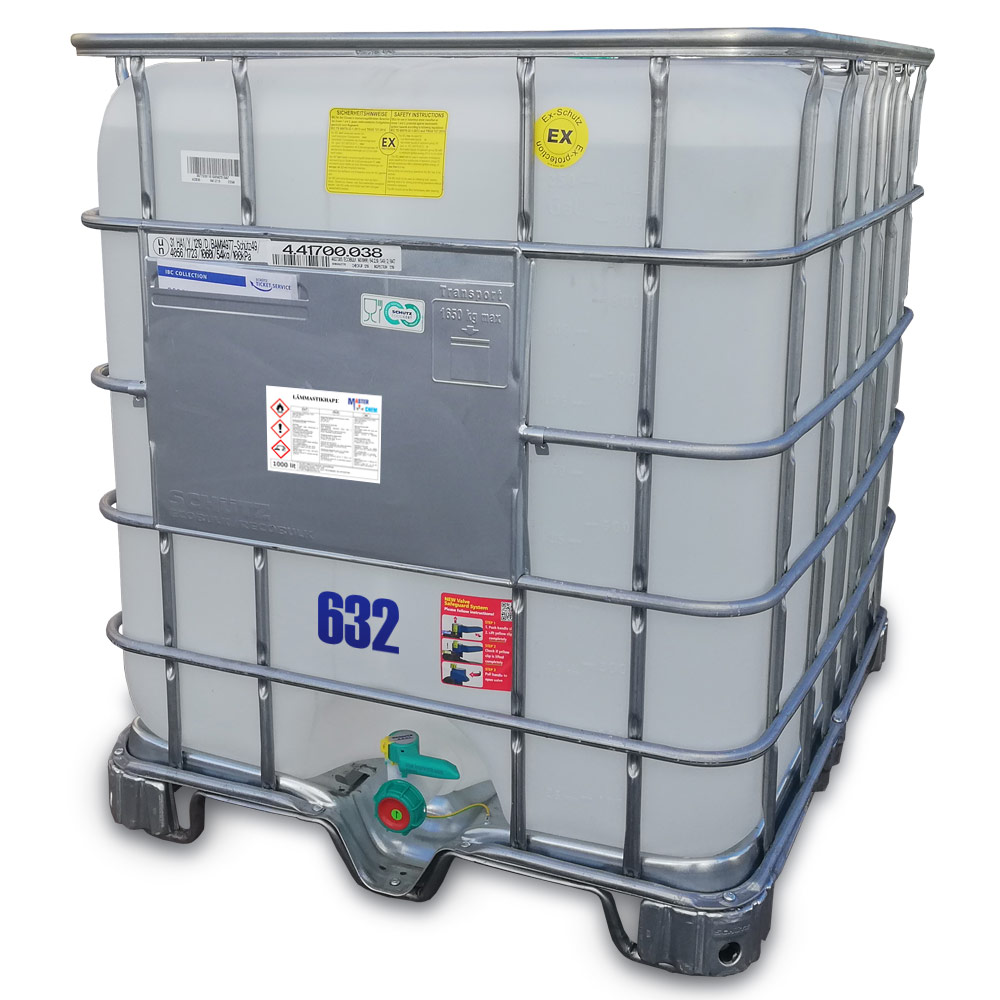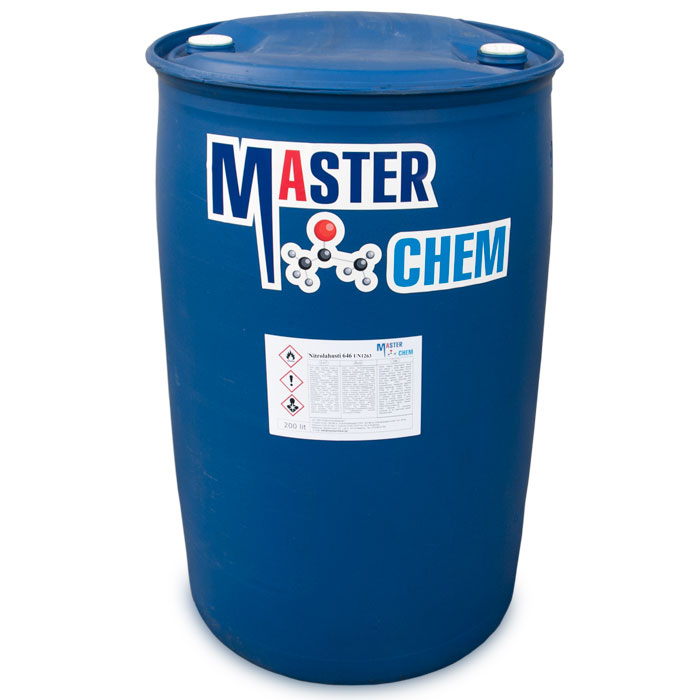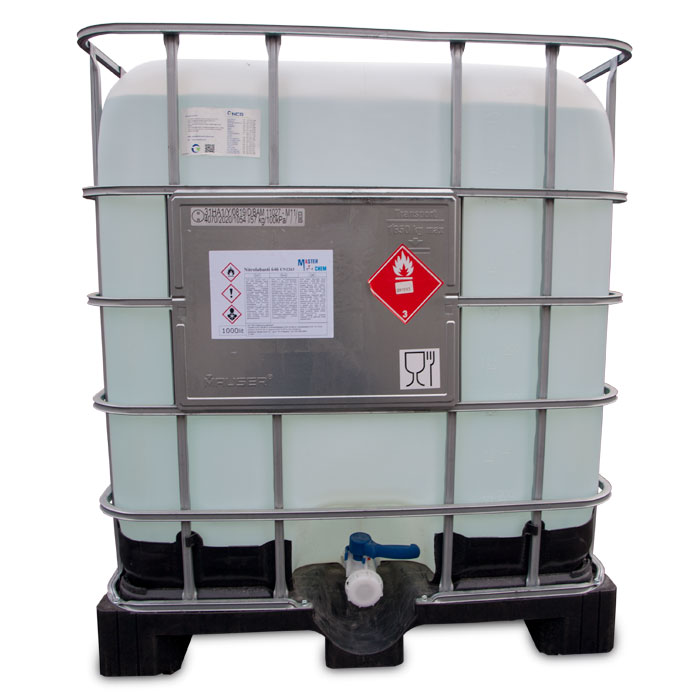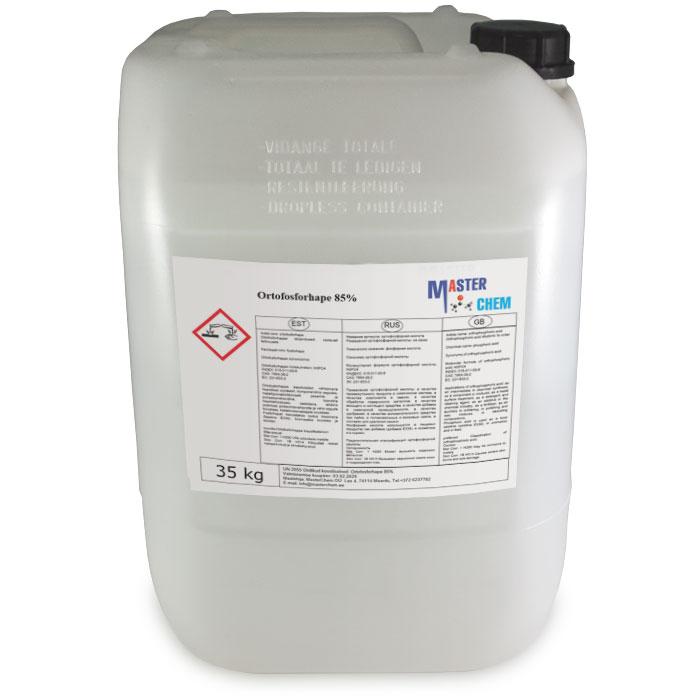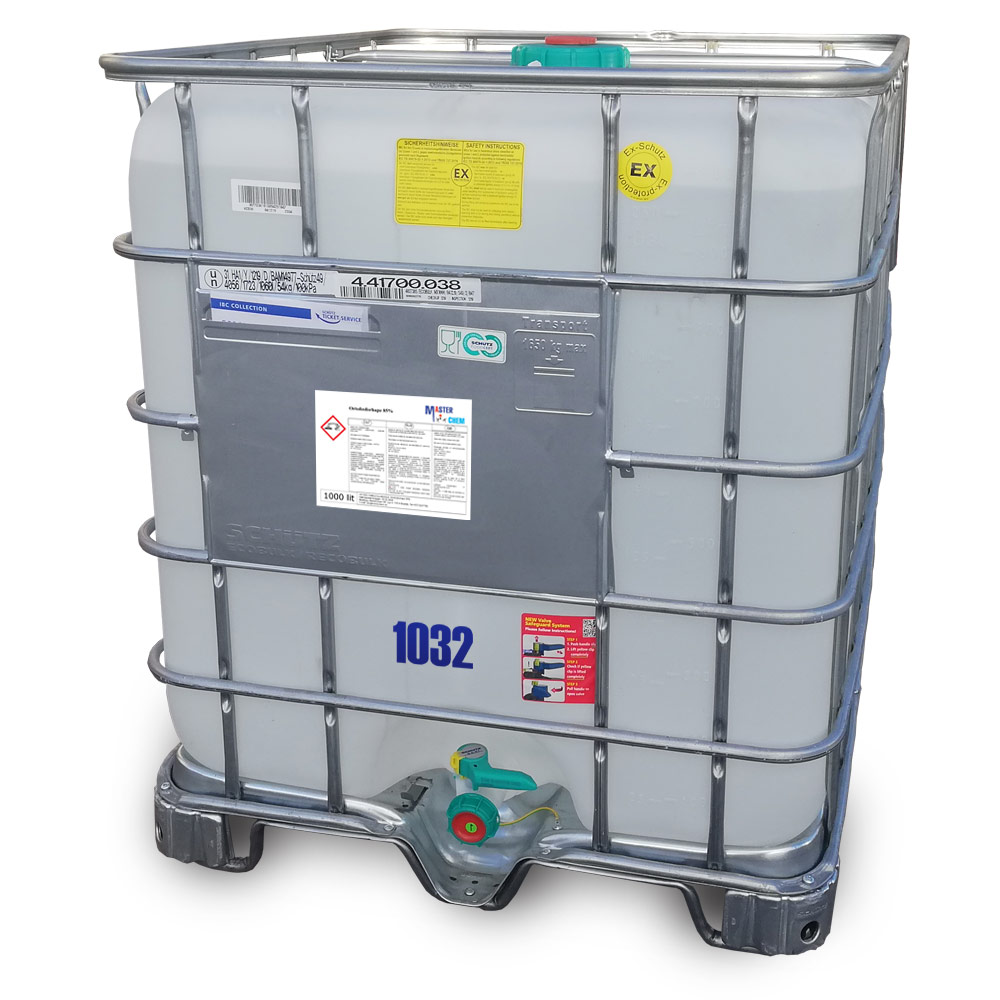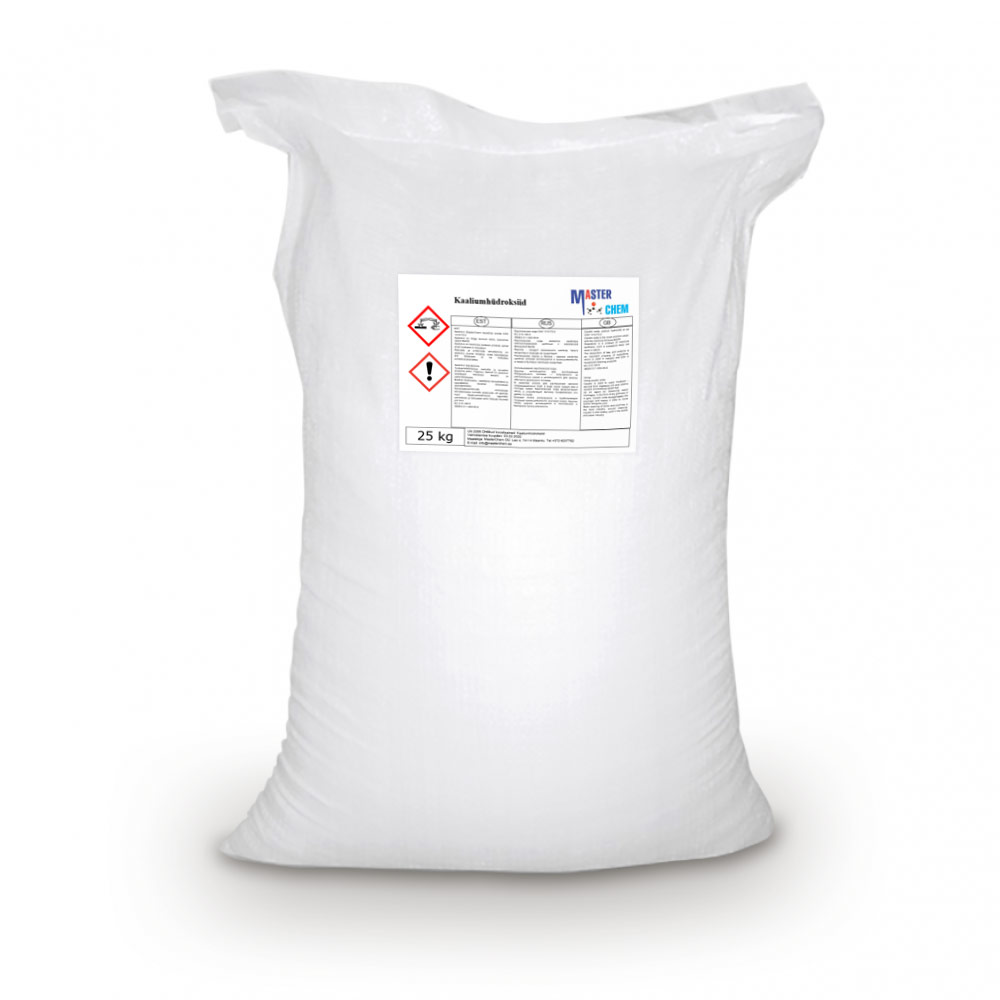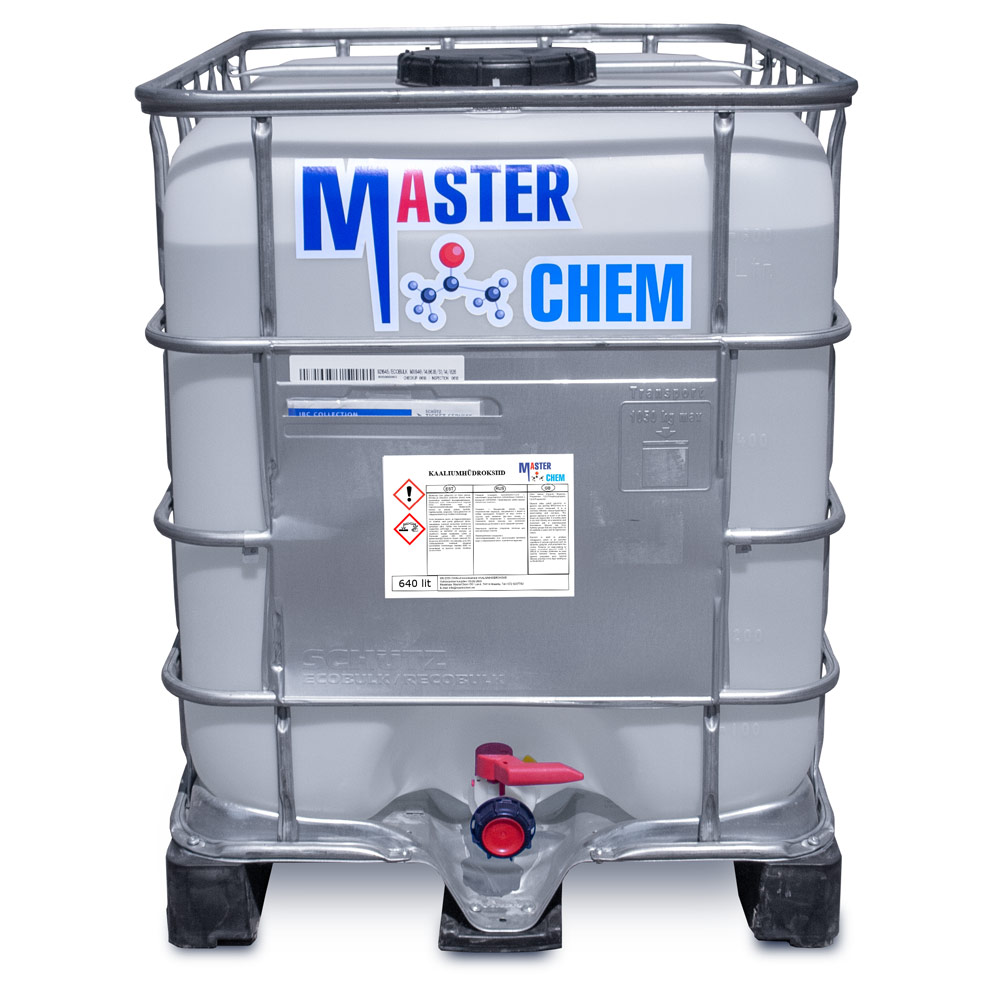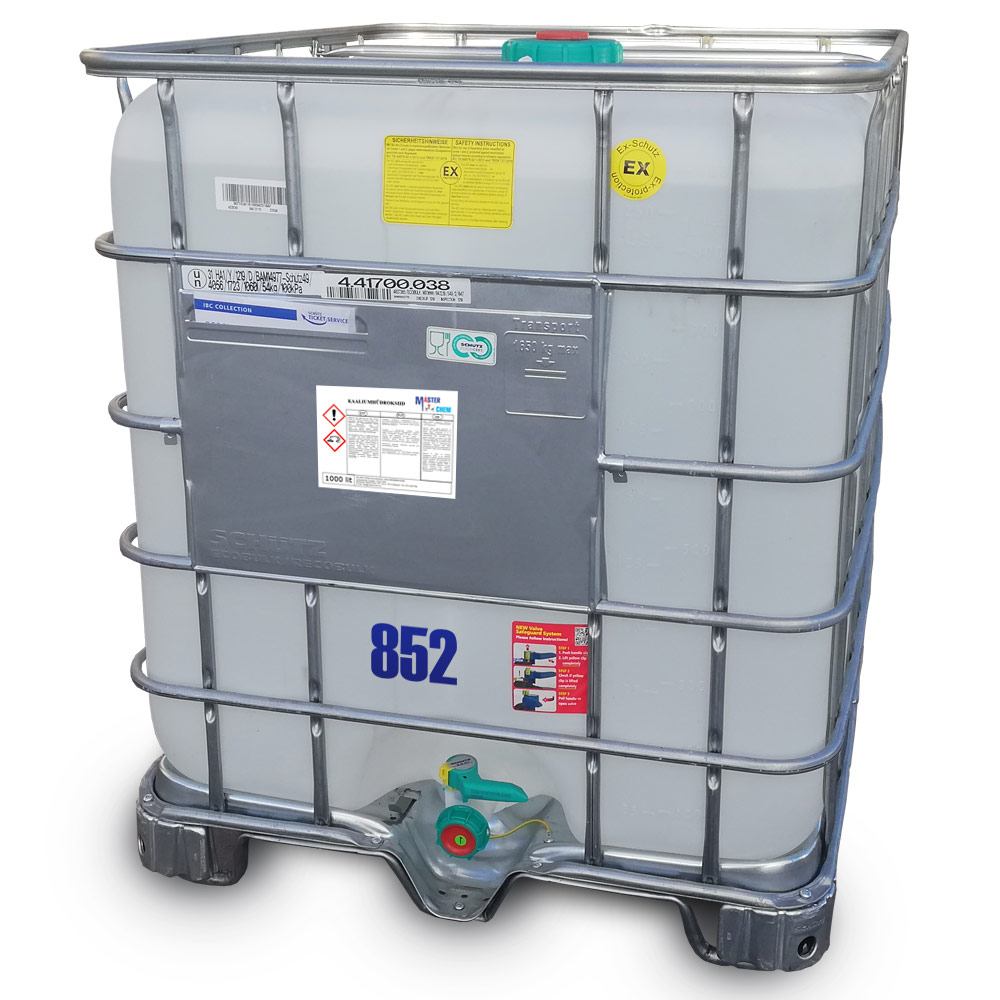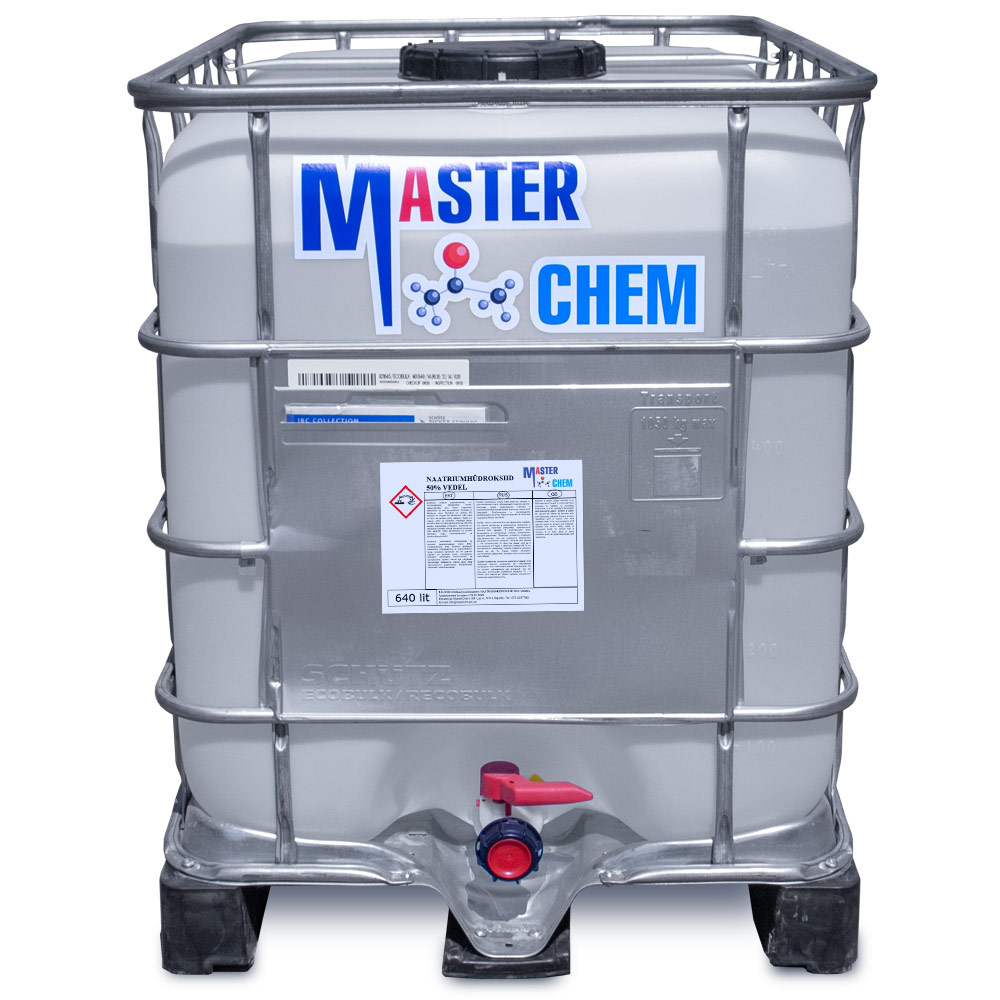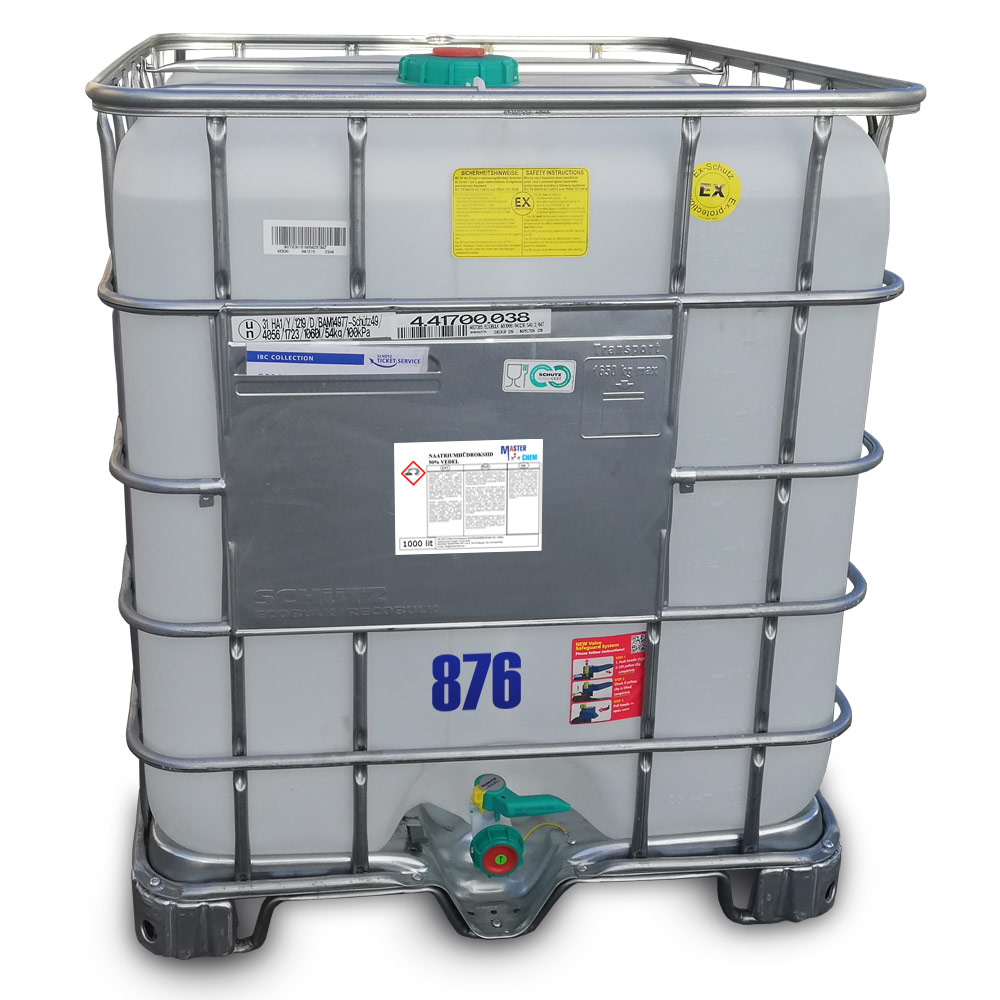Currently Empty: €0.00
MasterGuard ArcticShield Marine Antifreeze -50HD™
MasterGuard ArcticShield Marine Antifreeze -50HD™ is suitable for marine engines, both gasoline and diesel types. MasterGuard ArcticShield Marine Antifreeze -50HD™ is a high-quality extra-long-life cooling liquid designed for marine engines, offering superior protection against freezing in harsh marine environments with extremely cold temperatures. Formulated with propylene glycol and innovative corrosion inhibitors, it ensures optimal performance and longevity of boat engines. Uses carboxylate additive technology developed for highly effective system protection with maximum uptime in a wide range of operating conditions. This eco-friendly solution is non-toxic, making it safe for marine environments. Conforms to standards: ASTM D3306, ASTM D4985, ASTM D6210, SAE J1038, CAT EC-1, Cummins CES 14603, Detroit Diesel 7SE298, 93K217, Freightliner 48-22880, GM 1825/1899M/6277M, TMC RP329, Chrysler MS-7170, MS-9769, Ford WSS-M97B51-A1, WSS-M97B44-D, Mack Trucks CN H, 324.
MasterGuard ArcticShield Marine Coolant can also be used in boats and recreational vehicles (RVs), motorhomes, and caravans to protect the inboard engines, drinking water, and toilet systems against freezing.
MasterPR100 Organic Paint Remover
Safety:
Special precautions must be taken with MasterPR100: wear gloves to avoid contact with the skin and use a suitable air suction system.
Physical properties:
Physical properties
Density – 1.29 g / cm3.
Thermal properties:
Melting point -97 °C,
Boiling point 44 °C,
Flash point 14 °C
Storage and Distribution:
After long periods of storage, always check homogeneity and stir well before use to eliminate any possible sediment.
Storage is normally in a cool, dry and well ventilated facility away from oxidising agents. MasterPR100 should be kept out of direct sunlight, heat and open flames.
A bulk solvent exporter would normally distribute this solvent in bulk vessels or tank trucks. For transportation purposes, MasterPR100 is classed as a flammable liquid with a fire hazard rating of 2. A full bulk chemical distributor would export the solvent throughout regions such as the UK, Europe, Africa and America.
MasterSeaSafe Marine Antifreeze-30PRO™
MasterSeaSafe Marine Antifreeze-30PRO™ is designed specifically for marine engines, offering superior protection against freezing while being environmentally friendly. Its formulation is biodegradable and non-toxic, ensuring it does not harm marine life. Ideal for boaters who prioritize environmental conservation, MasterSeaSafe coolant ensures your engine runs smoothly in cold temperatures without compromising the ecosystem. This product represents a commitment to marine safety and environmental responsibility, making it an excellent choice for eco-conscious boaters looking for reliable engine protection. Do not damage products made of rubber, plastic, cast iron, steel, or aluminum alloys.
MasterSeaSafe Marine Antifreeze-30PRO™ can also be used in boats and recreational vehicles (RVs), motorhomes, and caravans to protect the inboard engines, drinking water, and toilet systems against freezing.
Methoxypropanol (CAS 107-98-2)
Propylene glycol methyl ether (PGME or 1-methoxy-2-propanol) is an organic solvent with a wide variety of industrial and commercial uses. Similar to other glycol ethers, it is used as a carrier/solvent in printing/writing inks and paints/coatings. It also finds use as an industrial and commercial paint stripper. It is used as an antifreeze in diesel engines.
CAS: 107-98-2
Oxalic (ethanedioic) acid (CAS 144-62-7)
Oxalic (ethanedioic) acid) is a dibasic saturated carboxylic acid, which is a chemical substance in the form of colorless crystals, soluble in water, incompletely in diethyl and ethyl alcohol, insoluble in benzene, chloroform, petroleum ether.
Application
Oxalic acid and oxalates are used in the textile and leather industries.
metallurgical (for cleaning metals from scale, corrosion, rust, oxides);
chemical (in the manufacture of dyes, plastics, ink, pyrotechnics);
textile (as a mordant when dyeing wool and silk);
microscopy (for bleaching the sections);
agriculture (as an insecticide);
pharmacology;
woodworking;
cosmetology (as part of whitening creams, masks and serums);
analytical chemistry (for the precipitation of rare earth elements);
household chemicals (as a bleaching and disinfectant component of detergents).
In addition, the substance is used to create food additives and biologically active complexes (as a preservative)
CAS: 144-62-7
Potassium hydroxide (flakes) (CAS 1310-58-3)
Potassium hydroxide, Lye, Custic potash, KOH
Potassium hydroxide, also known as lye is an inorganic compound with the chemical formula KOH. Also commonly referred to as caustic potash. It is used in various chemical, industrial and manufacturing applications. Potassium hydroxide is also a precursor to other potassium compounds. Potassium hydroxide is used in food to adjust pH, as a stabilizer, and as a thickening agent.
In addition to the above uses, potassium hydroxide is also used in making soap, as an electrolyte in alkaline batteries and in electroplating, lithography, and paint and varnish removers. Liquid drain cleaners contain 25 to 36% of potassium hydroxide.
Potassium hydroxide (flakes/pears) (CAS 1310-58-3)
Potassium hydroxide is an inorganic compound with the formula KOH, and is commonly called caustic potash.
Along with sodium hydroxide (NaOH), this colorless solid is a prototypical strong base. It has many industrial and niche applications, most of which exploit its caustic nature and its reactivity toward acids. An estimated 700,000 to 800,000 tonnes were produced in 2005. KOH is noteworthy as the precursor to most soft and liquid soaps, as well as numerous potassium-containing chemicals. It is a white solid that is dangerously corrosive. Most commercial samples are ca. 90% pure, the remainder being water and carbonates.
CAS: 1310-58-3
Sebacic Acid (CAS 111-20-6)
Sebacic Acid (CAS 111-20-6)
Sebacic acid is a castor oil-derived dicarboxylic acid. It is widely used to produce polymers, plasticizers, lubricants, and corrosion retardants. It can act as a pH corrector in the cosmetic products formulations. Sebacic acid is also used as a precursor to prepare sebacate esters such as diisopropyl sebacate, diethylhexyl sebacate, and dibutyl sebacate.
Sodium hydroxide (48% liquid) (CAS 1310-73-2)
Description:
Sodium Hydroxide, lye, caustic soda.
Inorganic chemical, the most common alkali, the chemical formula NaOH. This reactant is dissolved in water to form heat, and when reacted with certain metals, hydrogen is released. It is very hygroscopic, in the open air it “melts.” In addition to aqueous solutions, it can be produced in granular and scale form. The material is capable of corroding glass, paper, leather and other organic substances. It is a strong base and has chemical properties characteristic of these compounds.
Sodium hydroxide is a caustic and very toxic substance with pronounced alkaline properties. When working with him, you need to be careful. When getting on the skin, mucous membranes and in the eyes, serious chemical burns are formed.

